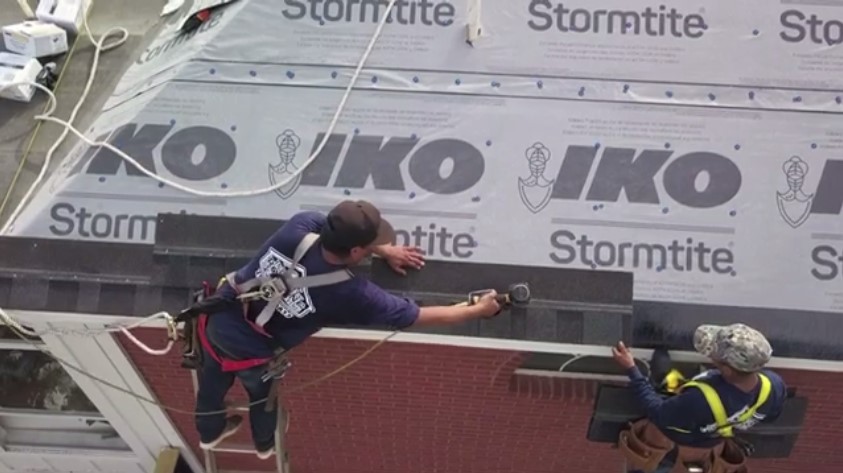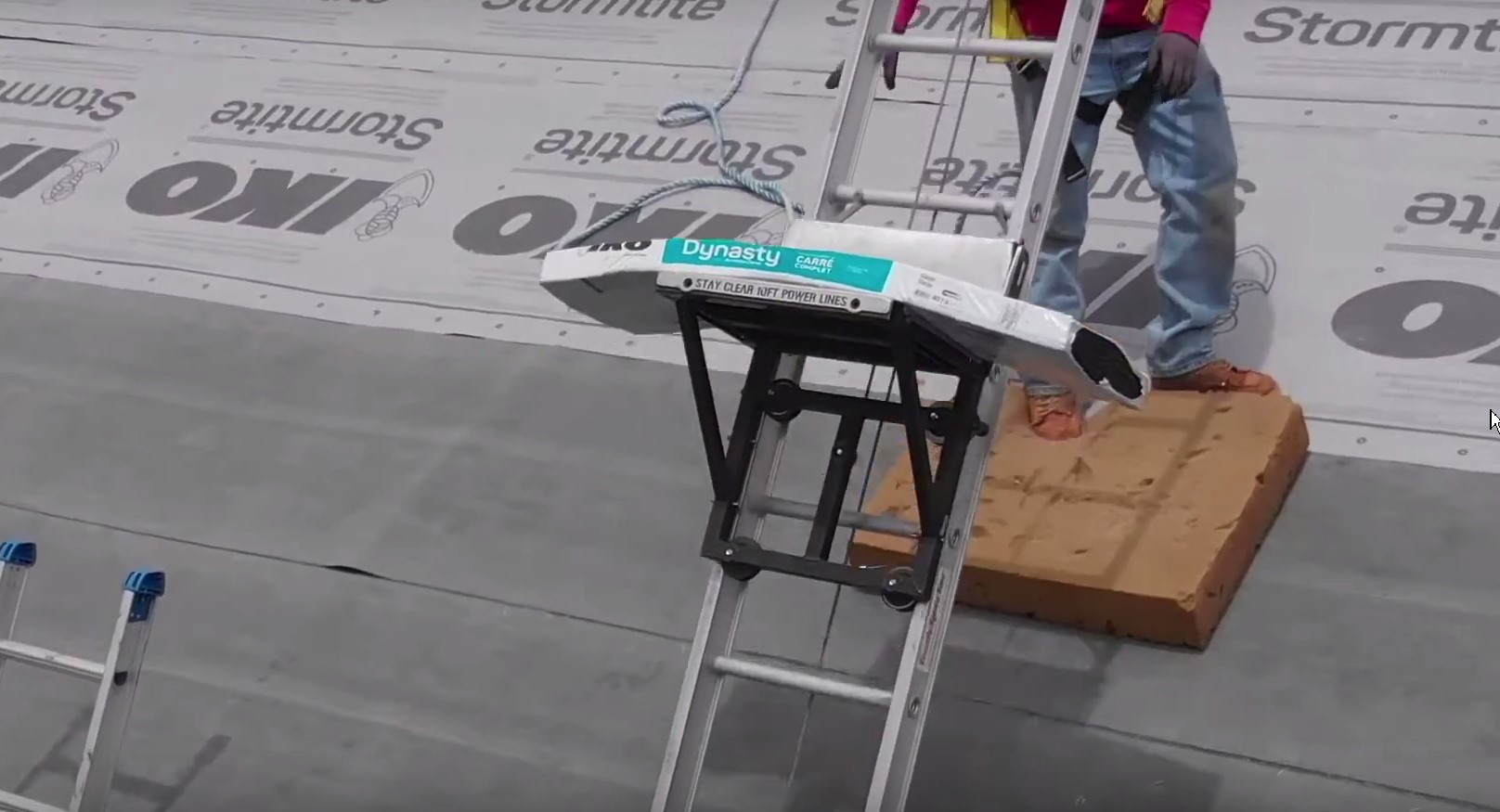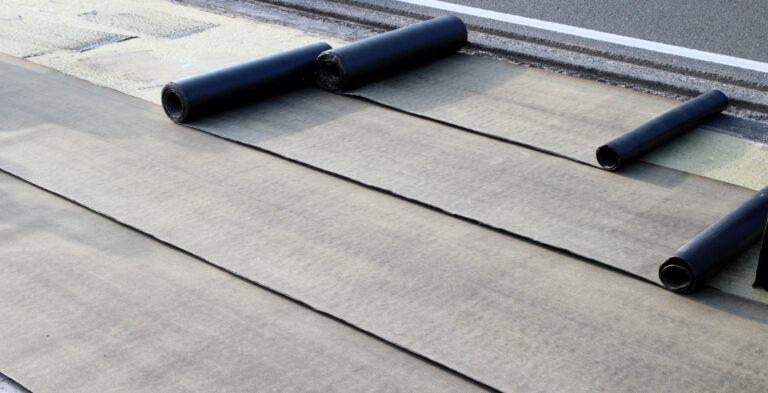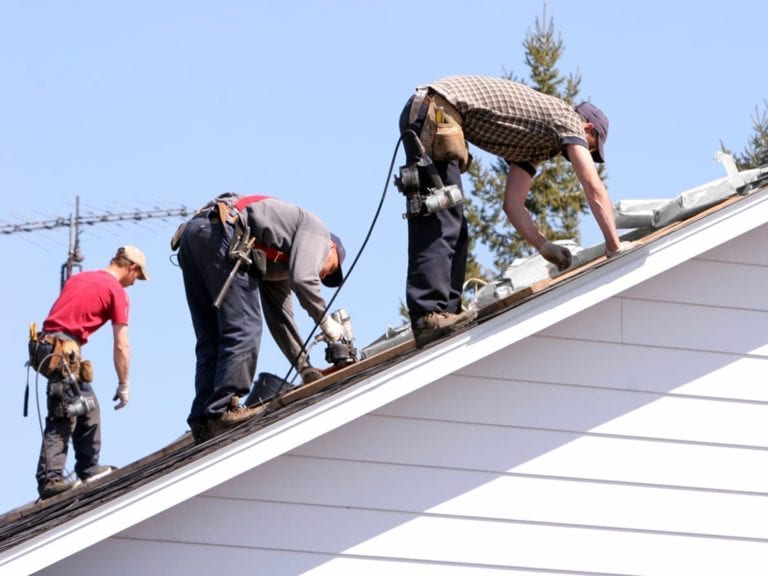How to Boost Roofing Productivity as a Small or Large Business
Table of Contents:
- How to Measure Productivity in Roofing
- Efficiency in Estimating and Scheduling
- Efficiency on the Job
- Material Ordering and Type
- Equipment and Tools
- New Technologies
- Customer Management
- Payment
- Keep Employees and Contractors Productive
- Financial Incentives
- Morale/Loyalty Incentives
- Other Tips for Employee Productivity
- More Resources for Your Business
As a roofer, the faster you can get roofs done, the more money you can make. That said, there’s no use in sacrificing quality for speed being that you don’t want to risk getting callbacks or bad reviews which can undermine your business reputation. The secret is to be efficient, balancing speed and quality to deliver great results in a reasonable time. Unfortunately, research from McKinsey demonstrates that efficiency has been flat in the construction industry at-large for decades. Whether or not you are stuck in this efficiency rut, there are always ways to improve and increase profitability.
There are many ways in which you and your team can be more efficient both on and off the roof. We’ll share tips that can help you maximize your productivity during every step of the job, no matter the size of your operation. And, critically for roofers, we’ll share how you can encourage your staff to work faster without sacrificing quality. We reached out to get firsthand knowledge on how to run a large roofing operation more efficiently from Robert Jackson, the owner of Roberts Restoration Inc. and also a member of IKO’s contractor loyalty program, IKO ROOFPRO.
How to Productivity in Roofing
Before you start to assess where you can improve your productivity, you need to understand how productive you are right now. The simple act of measuring your productivity can help you see where you have problematic areas, or perhaps you will learn that your business is more productive than you thought.
Start with a simple measurement: The area of the roof completed, divided by the number of labor hours worked to complete the roof. Be sure you’re counting each staff member’s time individually. The question is not whether you completed a 30-square roof in four hours if your team works from 8 a.m. to 12 p.m. Instead, your perspective should be financially driven: You pay your four employees 16 hours’ worth of time to complete the 30-square roof. Your productivity in this case is 1.875 squares per man hour.
Now that you have a basic measurement, you can start to make comparisons. Is your team much better at completing high- or low-slope roofs? Do roofs with special features slow you down? Or you can measure roofers individually to discover which employees are most productive and in which circumstances. On jobs where you score a much worse productivity than others, try to assess what went wrong and, if the delay was in your control, how you can fix it.
You may notice some patterns that slow down your operation across many different stages of your work. According to the aforementioned McKinsey study, some of the major factors that reduce productivity in the construction industry as a whole include:
- Poor organization: Roofing companies may fail to have all materials on hand, all staff on hand, or may suffer other organizational challenges. Heading back to your supplier costs time and impacts your efficiency.
- Inadequate communication: Keeping in touch with your team members and giving them access to your help when they need it can improve their efficiency
- Lack of accountability: Lack of leadership and accountability can make unresolved issues stack up and delay work.
- Poor short-term planning: Focusing on what needs to be done for this job over the next few hours, rather than the jobs you need to complete this week or month, can reap rewards in productivity.
- Limited talent management: How often do you step back and ask if you’re working with the right people, or if you have assigned the right people to this specific job?
We’ll keep these factors in mind as we walk through the roofing process and delve into tips to help you make your business more productive every step of the way.
Efficiency in Estimating and Scheduling
Your efforts to work productively should start from the moment that you get a lead. Answering customer calls and inquiries quickly not only helps you win business, but also prevents wasting your time by calling customers who have found another roofer to help them. However, many small businesses have trouble scaling up their operation when more calls start coming in, especially at the same time. If you’re facing this challenge, Robert suggests that you use a call answering service instead of a dedicated receptionist. A call answering service can answer multiple phone calls at once, perhaps 10 or more, so you don’t miss out on any potential customers.
Once you’re in contact with the customer, you’ll schedule their initial service and estimating call. Many roofers choose to use software or app options for scheduling to save time. This software may make it easier to assign employees and check up on the progress of calls. There are many different app options for roofers that can help you with these tasks.
You may also be interested in streamlining the estimating process, but Robert cautions that this can backfire. Estimating can take up a significant amount of time, but doing it poorly will make the actual repair or installation go poorly and take longer. He measures without the use of apps or estimating software, takes his time to answer all the customer’s questions and makes sure that they understand the scope of their roofing work.
Efficiency on the Job
There are many more opportunities to save some time during the repair or installation and directly afterwards. Here are some tips to help you refine your process.
1. Material Ordering and Type
Robert says that the No. 1 thing he does for efficiency is to make sure that all the roofing materials are at the job site when the work is to begin. Your staff should have the right quantity of each material to complete the job without needing to run to the supplier. Double-checking that you have the right kind of materials on-site is also wise. To do this successfully requires training salespeople very well to get accurate roofing material estimates. It would help if you also were proactive with ordering. In Robert’s roofing business, the salespeople take images of everything and draw up a complete list of what will be needed before the install or repair.
For Robert, it is vital to focus on selling a roofing manufacturer’s products that are always in stock at his local supplier, even in unusual circumstances, such as a global pandemic. This focus allows you to meet the demand for your services and avoid a chain of delays on your other projects, thereby saving a lot of time.
Robert also notes that buying from a more reliable supplier can get you better quality roofing materials than buying from a less reliable supplier. He suggests ABC and Richards in the United States. In Canada, you could consider Roofmart. Dedicated suppliers like this may also have ways to save you time by catering to contractors’ specific needs instead of members of the general public. Online ordering, order history and delivery details are just some conveniences that major suppliers offer.
Once the materials are on-site, try not to move them multiple times. Running the shingle stacks from the driveway, then to your ladder lift, then up onto the roof in different steps is a waste of time. When possible, deliver shingle stacks as directly to the roof as possible. Other materials should be delivered as close as possible to where you’ll need them too.
Selecting the right material type can also be beneficial in your efforts to save time. For example, IKO’s Cambridge®, NordicTM and Dynasty® shingles come in “Advantage” size. They are larger and have a larger exposure than other comparable shingles, and therefore, you need fewer to cover the roof. With fewer shingles, you spend less time nailing them down. While the exact number of shingles that you save when using Advantage sized shingles will get you depends on the size of the roof, they can allow you to install a roof up to ten percent faster than with the smaller standard-sized shingle. Robert argues that is valuable time to save as it helps reduce your overall costs.
There are other materials that can help you save time. Consider using starter shingles, cap shingles and preformed or precut flashing if you’re a residential roofer. These products are ready to use without any trimming or material waste.
2. Equipment and Tools
There are a few equipment and tool choices you can make to be more efficient on the job. In most cases, choosing a nail gun over a hammer is the right choice. The right kind of nail gun that is easy to pressurize and adjust throughout the day is also a great choice to promote efficiency.
You might also consider how to get shingle bundles onto the roof faster. There are motorized ladders, called ladder hoists, that can raise the shingle bundles for you. Or you can use a boom truck or lift to get the shingles up faster (and more safely).
Robert relies on great shingle removal tools, but stresses that you need to find the right option for you. Try out scoop shovels, pry-bars and tools designed specifically to remove shingles, such as the Figure out which is simplest for you and your team to use before investing in more than one.
During a tear-off, Robert also makes sure that his team positions a dumpster nearby to make catching old materials, as they are removed from the roof, and cleaning them up faster and simpler. Placement of the dumpster is key to make the process faster.
How you move your tools throughout the day can also impact your efficiency. Leaving tools behind at your shop or storage facility will obviously negatively impact your time. But forgetting tools on the ground, leaving tools at the break-site and not putting tools back in their holster or storage spot can all cut into your time too. Encourage employees to put tools where it’s most efficient to keep them until those tools are needed again.
Also, your safety equipment can also impact your efficiency. A study from the University of Wisconsin-Whitewater found that roofers spend a considerable amount of their time adjusting their personal fall arrest system (PFAS) while working. The steeper the slope, the more time roofers spend adjusting their safety equipment. At an 18-degree slope, roofers spend 6.8% of their time adjusting their PFAS, and at a 34-degree slope, they spend 11.2% of their time making the same adjustments.
Of course, the answer to this is not to abandon PFAS use or discourage employees from adjusting them as they need to in order to work comfortably and safely. Instead, consider how intuitively your PFAS works. A better roofing harness that is fast to adjust or more comfortable can cut down on the time your employees spend adjusting it and therefore boost their productivity.
3. New Technologies
It is worthwhile to occasionally investigate new technologies that can help you be more efficient while working. Common examples of technology roofers can use for efficiency include roof measurement tools, drones, infrared leak detectors and more. When you’re assessing these technologies, consider exactly how much time they could stand to save you and if that time is worth the investment.
Ultimately, you want technology that offers great results for its value and doesn’t add too much extra hassle to your workflow. This calculation will be different for every technology, and sometimes it is hard to understand how the tool could work for you. When possible, conduct a trial period with the technology, or borrow it for the short term, to ensure that it will really bring the efficiency bonus it promises.
4. Customer Management
During the job, you may spend a lot of time updating customers, managing their expectations and then walking them through the job and requesting payment. Is there any time to be saved here?
Usually, answering a customer’s every question is a good idea, but it can be hard to balance interruptions when you’re trying to work quickly up on the roof. Robert suggests that you can use a customer relationship management tool to keep customers in the loop without spending too much time on their calls. He favors solutions that let customers look at the job progress in real time, typically from an app, while they are at work. There are a few great options for customer relationship management apps for roofers.
Of course, before you finish the job, you can take some steps to prevent callbacks, as they can use up a lot of your time. Robert does a full walk-through with the customer before he leaves, answering their concerns so that they don’t need to call about them later. There are other ways to prevent callbacks that you can explore.
5. Payment
Do you hand the customer a bill before you leave? Cutting down the time you spend reminding customers to pay will not just save you time, but it’ll also help you achieve a healthier cash flow. Many digital tools can help you send an invoice to your customers, where they can pay immediately, encouraging faster payment. For example, take a look at QuickBooks® and its integrations, like Knowify and Jobber®.
Keep Employees and Contractors Productive
If you have even a single employee, it is wise to invest some time into ensuring that he/she remains productive. Robert tries to hire more productive staff as much as possible, although, with the labor shortage, this is challenging for many roofing businesses. He looks for potential staff with experience or who have certifications from manufacturers.
Retaining productive roofing staff members is just as important as hiring them. Offering strong incentives, including higher base pay and bonus pay for your busiest times, like storm season, is a great idea. Of course, staff members need proper training to meet your expectations for speed, as motivating with high pay without proper training can lead to poor-quality roofing.
Physically, your roofers need to be hydrated and well-fed to be productive. Even the best employee will see a drop in efficiency if he/she is thirsty or hungry. Make sure that all your employees have access to water and take their full lunch break. Consider having a cooler of water and snacks on hand for those especially hot days. Providing some refreshments can also help demonstrate that you care about your employees.
Once you have taken care of the basics, you can also go the extra mile to incentivize your employees. There are many different strategies to motivate the employees you already have. In general, you can divide them into two categories: direct financial incentives and incentives made to boost morale and increase loyalty. It’s often best to combine both kinds of incentives or to find out what motivates a specific employee and target your strategy based on that.
Financial Incentives
There are seemingly endless financial incentive options to offer to roofing employees:
- Consider giving employees each a share in 10% of the gross profits your business makes at the end of the year. Keep it to a 10% maximum to protect the success of the company.
- Give out an award, in cash or gift cards, on a weekly or monthly basis to the employee who works most productively, went the extra mile or was impressive in some other way.
- Do not force employees to wait around when their work is done. Instead, pay them for the full day, as a reward for being efficient.
- Tune your financial incentive to the size of the job. Give small bonuses for small jobs and larger ones for your most lucrative jobs.
- Dispense bonuses quarterly, based on efficiency, so employees get regular feedback about their work and rewards for working well.
- Keep employees comfortable with fair wages, instead of relying on bonuses to get them up to something comfortable. Comfortable employees work better.
- Consider offering paid time off and flexibility can help you stand out from other employers and are good incentives to keep your best staff.
Morale/Loyalty Incentives
There are even more ways to maintain or develop loyalty and improve team morale. Anything you can do to boost your team members’ attitude about their work and your businesses will improve their efficiency. Here are some ideas you can try:
- Work on the roof regularly to remind the staff that you’re just like them and willing to do hard work too.
- Say “thank you” and “good job” more often and always when it’s earned.
- Publicly compliment outstanding work or efficiency.
- Create an employee-of-the-month award or an MVP award you give out monthly.
- Offer free refreshments or food weekly, or monthly. You can do it before, during or after work. Be sure it is food the employees will really enjoy.
- Hold after-work events that fit your company culture, perhaps a BBQ, a movie night or a sports game.
- If you have multiple jobs at a time, focus on assigning employees to work with those that they are most productive with. Limit conflict, but don’t let talking undermine work productivity.
- Get to know your employees’ goals, or what is going on in their lives, and ask them about them regularly.
- Make sure employees know your efficiency expectations so they can feel good when they surpass them.
- Avoid micromanaging or telling staff (assuming they are well-trained and do quality work) how they should be working.
Other Tips for Employee Productivity
Even the best employees will work less efficiently when they are overworked. Offering overtime occasionally is okay, but routinely scheduling roofers for more than 40 hours per week will make them work slower. Protect your employees from burnout and you’ll find they work at a more consistent rate.
Also, empower your staff to get in touch with you to handle any unforeseen problems quickly. Simple communication tools meant for contractors can help. Using them, you can create a group conversation for each job, adding only the employees and all the employees on that job. This limits back-and-forth and ensures that everyone is in the loop about the job. However, other business communication tools, such as Slack, or even casual options like WhatsApp, can still be helpful if well-managed.
Using subcontractors can be another way to increase efficiency on the job site. While you need to pay them a bit more, they can be highly efficient and can motivate your own staff. That said, it’s wise to make sure they have their own roofing business insurance. And it is good practice to post at least one of your employees with them in order to make sure that they are working to your standards.
More Resources for Your Business
IKO’s blog has many more resources you can use to improve your profitability. In your efforts to promote efficiency, don’t neglect safety. Learn about roofing safety equipment, such as PFAS, and how to keep your employees safe on the job.







